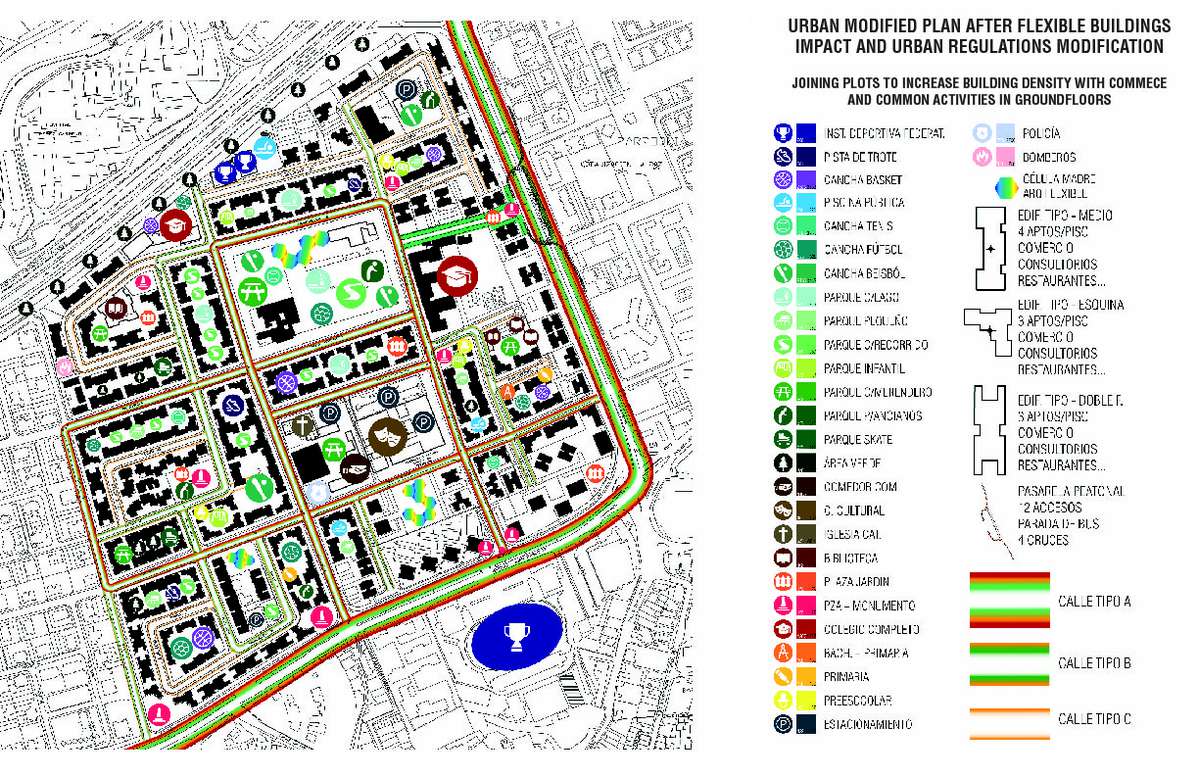Idea by
Andres M. Panza Uguzzoni
TAU - Architectural Urban Design Organization, Caracas, Venezuela
Call for ideas 2021
Urban Mother Cells For a Dynamic City
Urban Mother Cells For a Dynamic City

- Systemic changes
Intermedial cities in Europe presents, low density and low dynamics, due to a smaller scale, zoning, suburb conditions (serving just as a mainly residential area), and producing a high dependance on transportation for dwellers, products and services, following a non-sustainable approach and reducing the interaction of an entire town (Situation present in Cantalupo, Italy, for example). The idea is to produce a non-invasive change for this cities by introducing on specific points, flexible architecture buildings, like mother cells (bringing what is missing in this tissue that is the city, reproducing it, curing it, producing a new development), to provide new events and services that can be replied and managed then by the inhabitants, as an incentive, to produce a domino effect and include new activities, produce a modification in the urban context due to peoples new interests, increasing dynamics, density, and scale for this territories (accompanied by urban regulations modifications).

The idea was development as a case study in a Venezuelan context, in Caracas, but can be replied in other urban contexts and Intermedial cities in Europe, due to similar zoning conditions and problems. Montalban I is a low density area, mainly use as a residential zone with few commerce and some parks, it presents very poor interaction and activities, making dwellers move to other locations for working, entertainment, services and so on…

The next step is to analyze the proportion of necessities by zones of the area, to understand what is missing on each site and introduce what is really necessary; then centralized points must be identified in order to provide, in very specific places, the activities missing

Once proposed the ideal points, these plots were identified as voids or non-use places, so flexible architecture interventions can be introduced without demolishing. Once introduced, activities will increase people’s interest, and dynamic so will do, inviting dwellers to invest in new commerce, expansions and remodeling; at this point urban regulations must change to incentive plots joining and density increase, to leave ground floors for common activities (commerce, workshops, sports…)

Here is a preview of an advanced state of modification, in a place were previously where only houses, now are many medium scales buildings with common gardens and a mixture of activities in a continuous ground floor, so is not necessary to move along huge distances for everyday activities, and the amount of green common areas and activities has increased.

Urban Mother Cells For a Dynamic City
Urban Mother Cells For a Dynamic City

- Systemic changes
Intermedial cities in Europe presents, low density and low dynamics, due to a smaller scale, zoning, suburb conditions (serving just as a mainly residential area), and producing a high dependance on transportation for dwellers, products and services, following a non-sustainable approach and reducing the interaction of an entire town (Situation present in Cantalupo, Italy, for example). The idea is to produce a non-invasive change for this cities by introducing on specific points, flexible architecture buildings, like mother cells (bringing what is missing in this tissue that is the city, reproducing it, curing it, producing a new development), to provide new events and services that can be replied and managed then by the inhabitants, as an incentive, to produce a domino effect and include new activities, produce a modification in the urban context due to peoples new interests, increasing dynamics, density, and scale for this territories (accompanied by urban regulations modifications).

The idea was development as a case study in a Venezuelan context, in Caracas, but can be replied in other urban contexts and Intermedial cities in Europe, due to similar zoning conditions and problems. Montalban I is a low density area, mainly use as a residential zone with few commerce and some parks, it presents very poor interaction and activities, making dwellers move to other locations for working, entertainment, services and so on…

The next step is to analyze the proportion of necessities by zones of the area, to understand what is missing on each site and introduce what is really necessary; then centralized points must be identified in order to provide, in very specific places, the activities missing

Once proposed the ideal points, these plots were identified as voids or non-use places, so flexible architecture interventions can be introduced without demolishing. Once introduced, activities will increase people’s interest, and dynamic so will do, inviting dwellers to invest in new commerce, expansions and remodeling; at this point urban regulations must change to incentive plots joining and density increase, to leave ground floors for common activities (commerce, workshops, sports…)

Here is a preview of an advanced state of modification, in a place were previously where only houses, now are many medium scales buildings with common gardens and a mixture of activities in a continuous ground floor, so is not necessary to move along huge distances for everyday activities, and the amount of green common areas and activities has increased.
